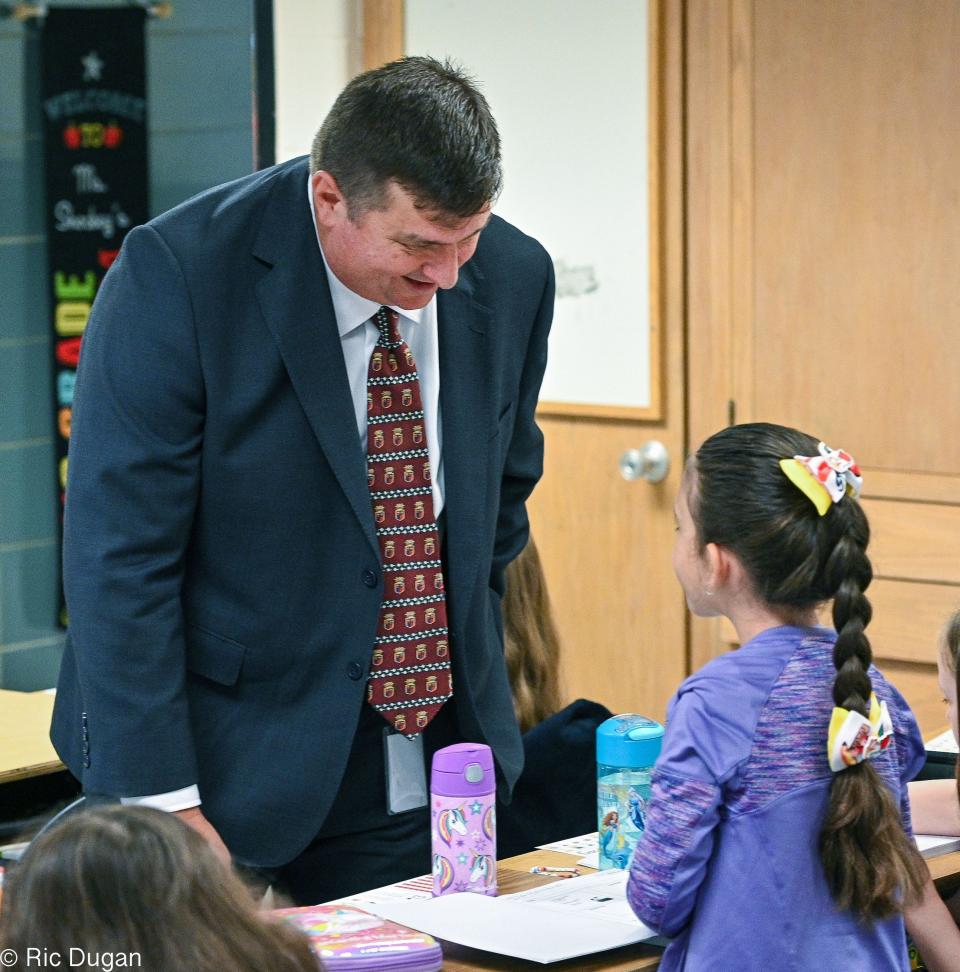Washington County revises plan to add teachers as state funding to schools is reduced
Washington County is apparently getting wealthier — but there's a catch.
The county's rising wealth is calculated into the amount of money its public school system receives from the state. And for Washington County Public Schools, that means nearly $3 million less in state funding than was anticipated for the new fiscal year that begins July 1.
"As it turns out, wealth is growing in Washington County, which is good news for our community," WCPS Superintendent David Sovine told the Washington County Commissioners Tuesday. "It's actually growing at a faster rate than the state average though, which is the factor that makes the difference in this budget cycle.
"That means WCPS will receive about $2.9 million less than we expected."
More: HCC is growing fast — but college officials aren't asking for more money from the county this year
Why is state money for WCPS schools dwindling?
Jeff Proulx, the school system's chief operating officer, explained that the funding formula is based on "individual enrollment counts" taken in the fall of each year. The Blueprint sets funding requirements on a per-student rate, but Proulx said those rates were set before recent increases in inflation.

The split between the portion state and local governments need to spend depends on how wealthy the local jurisdiction might be. Wealthier counties get less state aid; poorer counties get more.
A percentage of net taxable income, real property and personal property assessed values is used to calculate a county's wealth. Proulx told the commissioners Washington County's calculated wealth was about $10.2 billion. That number is then divided by the number of students in kindergarten through high school to determine the county's wealth per pupil.
Proulx said for the past year, Washington County's growth rate was higher the state's rate, at 4.4% for the county compared with 2.9% for the state, after running at about the same rate for the previous two years.
State grant money even for less wealthy counties is reduced if the county provides minimal funding based on its wealth, Proulx said.
He compared it to the state's "disparity grants" for less affluent counties. Counties qualify for the grant based on local wealth — or lack thereof — but the amount counties receive is reduced if the local government isn't collecting the highest permissible income tax rate.
Washington County usually qualifies for the disparity grants, but the past Board of Commissioners' decisions to reduce the local income tax rate means the county is getting millions less in these annual grants than before.
More: After Maryland's community college enrollment grows, state funding shrinks. Find out why.
How will WCPS make up for the shortfall?
The Board of Education already had planned to ask the county commissioners for a budget increase of more than $9.6 million — from $109 million in the current budget to $118.7 million for Fiscal Year 2025 — as local responsibility for funding under the state's "Blueprint for Maryland's Future" education policy expands.
That request was included in the "needs-based" budget Sovine had submitted to the school board last month, after administrators cut more than $1 million from initial requests from the school system's departments.
"At that time, I told our board I was presenting a truly needs-based budget, and I still attest that that budget was comprised of expenditures that our students truly need and that our students, teachers and staff truly deserve," Sovine told the commissioners.
And then the governor released his state budget proposal, and school officials learned they would be getting only $7.5 million of the $10.4 million increase they had anticipated from the state.
"The governor's proposed state budget has presented an unexpected challenge," Sovine said. "WCPS will be receiving nearly $3 million less in state funding than we anticipated just three weeks ago.
"We've all known for a while that the (FY 2025) would be difficult budget challenge. This will be the fiscal year with the lowest financial contributions for the Blueprint mandates. In addition, we are fully transitioning out of those federal COVID grants; strategies that were initially intended to help students through the pandemic have now become critical supports."
Sovine said further cuts have now been made to absorb the loss, because he did not want to ask the commissioners to make it up.
Those cuts include a number of positions the school system hoped to add in the next fiscal year, including teachers for the proposed InnovatED Learning Center, which would merge Antietam Academy, the online learning program and several other programs.
Also eliminated were plans to add special education teachers, student reading apprentices, seven elementary school teachers, two middle school teachers and two counselors.
Gov. Moore's State of State address: 'The state of our state is strong': Gov. Moore delivers second State of the State address
Hagerstown Community College has found itself in a similar situation. When HCC President Jim Klauber presented its FY 2025 budget request to the commissioners last month, he sought the same local funding the commissioners had allotted for this year: $10.2 million.
Klauber noted the state had finally fully funded its "Cade" formula for community colleges.
"That has helped us, especially with this enrollment growth; it helps us on that operational side," he said, "so we really don't have to come to you and ask for more money at this point."
But now, Gov. Wes Moore has proposed a new formula that would reduce funding to Maryland community colleges by more than $22 million.
Funding under the proposed legislation alters the formula for community colleges to 26.5% of the funding given to the state’s four-year public institutions.
The Maryland General Assembly is reviewing Moore's budget proposal; passage of a final state budget usually comes in March but is required by the time the Legislature adjourns April 8.
This article originally appeared on The Herald-Mail: State spending on local schools drops as county wealth rises

